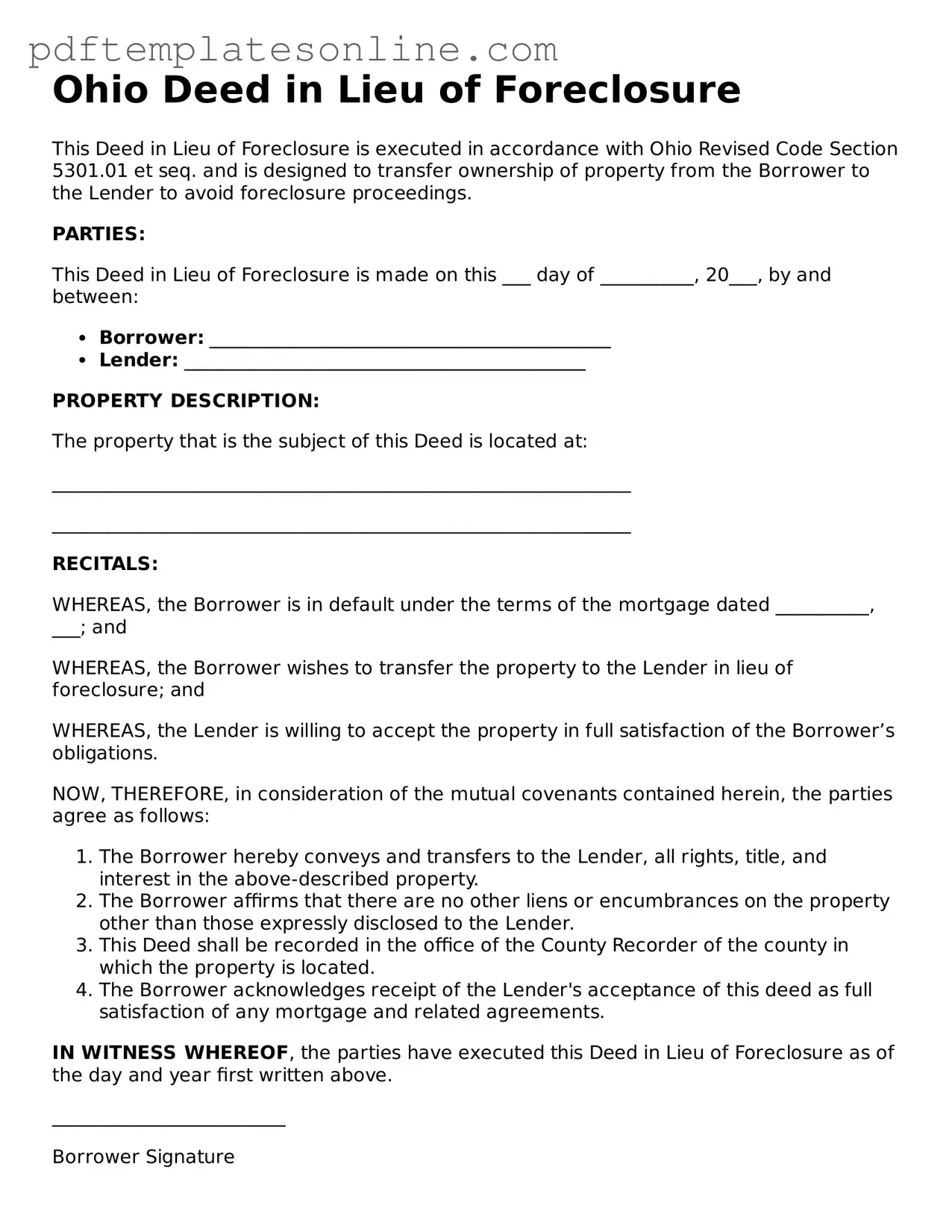Official Ohio Deed in Lieu of Foreclosure Document
A Deed in Lieu of Foreclosure is a legal document that allows a homeowner to transfer ownership of their property to the lender in order to avoid the foreclosure process. This option can provide a smoother resolution for both parties involved, often resulting in less financial strain for the homeowner. Understanding the details and implications of this form is essential for those facing financial difficulties related to their mortgage.
Access Deed in Lieu of Foreclosure Editor Now
